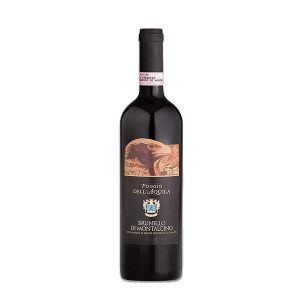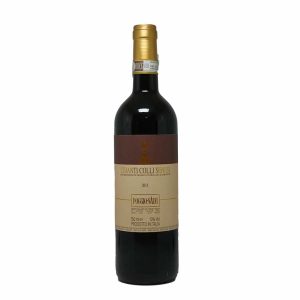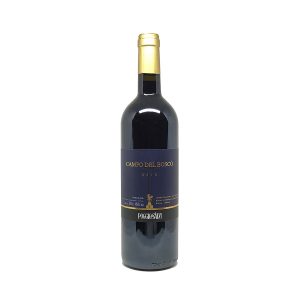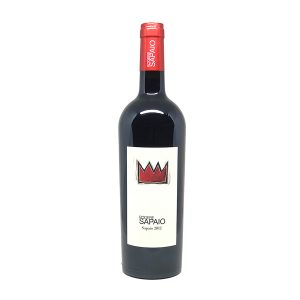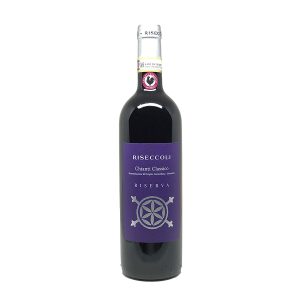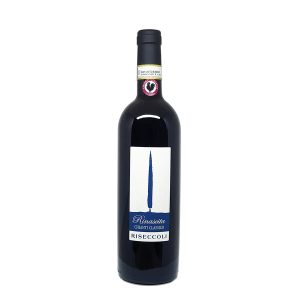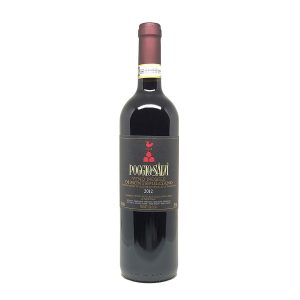Roughly triangular in shape, Tuscany borders the regions of Liguria to the northwest, Emilia-Romagna to the north, Marche to the northeast, Umbria to the east and Lazio to the southeast. The comune (municipality) of Badia Tedalda, in the Tuscan Province of Arezzo, has an exclave named Ca’ Raffaello within Emilia-Romagna.
Tuscany has a western coastline on the Ligurian Sea and the Tyrrhenian Sea, among which is the Tuscan Archipelago, of which the largest island is Elba. Tuscany has an area of approximately 22,993 square kilometres (8,878 sq mi). Surrounded and crossed by major mountain chains, and with few (but fertile) plains, the region has a relief that is dominated by hilly country used for agriculture. Hills make up nearly two-thirds (66.5%) of the region’s total area, covering 15,292 square kilometres (5,904 sq mi), and mountains (of which the highest are the Apennines), a further 25%, or 5,770 square kilometres (2,230 sq mi). Plains occupy 8.4% of the total area—1,930 square kilometres (750 sq mi)—mostly around the valley of the Arno. Many of Tuscany’s largest cities lie on the banks of the Arno, including the capital Florence, Empoli and Pisa.
The climate is fairly mild in the coastal areas, and is harsher and rainy in the interior, with considerable fluctuations in temperature between winter and summer,[10] giving the region a soil-building active freeze-thaw cycle, in part accounting for the region’s once having served as a key breadbasket of ancient Rome.
About Tuscany Wine
It may seem logically and geographically absurd to single out Tuscany from the rest of central Italy but it makes perfect sense for wine lovers. The Veneto may be the Italian wine industry’s commercial centre, Piemonte may be the source of the country’s greatest gastronomic thrills, but in the forever medieval hills of Tuscany is Italy’s greatest concentration of ambitious, dedicated winemaking. Toscana, as it is known in Italian, is the land of the smallholder rather than the co-operative, many of these smallholders having earned their not inconsiderable fortunes elsewhere (as in California’s Napa Valley). Since the 1970s they have invaded this beautiful countryside dedicated to olives, cypresses and vines, once dominated by aristocratic Florentine wine merchant houses such as Antinori, Frescobaldi and Ricasoli.
In the 1960s, when the entire wine world was driven so much more by the need to supply quantity rather than quality, some extremely questionable clones of Sangiovese were planted, producing wines so light they had to be beefed up with undercover additions from the hotter climates of southern Italy and its islands. The Chianti region’s researchers’ subsequent major task has been to identify those clones of Sangiovese which produce the best quality wine, which means that today the great majority of Chianti exported is almost unrecognisable from the pale, tart ferments of old. It is deep-coloured, carefully matured in oak, with ageing potential and flavours intriguingly reminiscent of prunes and chestnuts.
The relentlessly undulating landscape, relatively high altitudes, and its temperate climate make it ideal for producing red wines with the same sort of digestible weight (about 12.5–13.5% alcohol) and ageing potential as red Bordeaux. But the wines’ flavours are very different from their French counterparts. The Sangiovese vine is king here and the quality of wine it yields depends heavily on the exposure and particularly on the altitude at which it is planted. Much of Tuscany is quite high and, as anyone who has visited Tuscany in the winter knows, it can be inhospitably bleak.
Greater Chianti is Tuscany’s, indeed Italy’s, most important, if much-divided wine zone. Chianti is in principle made from Sangiovese with varying additions of both local and international grape varieties. Not surprisingly, it comes in all quality levels, from dire to sublime. A wine labelled simply Chianti is likely to be a very basic red sold to meet a price. To discover what the Tuscan hills really have to offer the taste buds it is necessary to seek out a wine labelled with the name of one of the eight superior subzones.
Chianti Colli Aretini, Chianti Colli Fiorentini, Chianti Colline Pisane and Chianti Colli Senesi are not widely exported and are named respectively after the hills surrounding Arezzo, Florence, Pisa and Siena. Chianti Montespertoli is effectively a western extension of the Colli Fiorentini, Chianti Montalbano is generally a lightish wine made west of Florence while Chianti Rufina, from east of the city, can be one of the finest and longest-lasting even if it can seem a little light and tart when young. Selvapiana is a prime example. Undoubtedly the most important Chianti zone in terms of quality and durability, however, is Chianti Classico, the hilly heart of the Chianti zone.
It is fair to say, and this is a generalisation which can rarely be made of any other wine zone anywhere, that Chianti Classico is one of the more consistently well made wines in the world. You may not like the defiantly rural, almost farmyard-like flavours of Sangiovese but an admirably low proportion of all Chianti Classico is carelessly made.
Regulations introduced in 1984 (with almost farcical disregard for the fact that this was Tuscany’s most disastrous vintage in living memory) elevated both Chianti and Chianti Classico to DOCG status and insisted on suitably low yields, sensible minimum ageing periods and disqualification of the produce of vines younger than five years old. (As vines age they are generally supposed to yield fewer but better grapes, partly because their root systems are better developed.) More recent rules formalise what had in reality been happening for some time in recognition of the shortcomings of the Chianti grape variety recipe. Although Sangiovese continues to provide the backbone of Chianti Classico (and the better clones, carefully transformed into wine, can display lovely ripe, pruney nuances), producers may add up to 20% of such immigrants as Merlot, Syrah and Cabernet Sauvignon, all of which have produced some stunning wine in Tuscany (some argue that Syrah is the most successful of the three) and white grapes are at last outlawed. If French grape varieties were the most notable import to Tuscany’s vineyards in the late 20th century, small French barrels had the same dramatic effect in its cellars. Wines were traditionally aged in large old Slavonian oak ovals, but the effect of widespread use of newish small French oak barriques was to concentrate and smooth the flavours of wines matured in them. More recently there has been a return to larger, more traditional casks and a newfound respect for 100% Sangiovese wines.
One interesting development of late has been the re-evaluation of Chianti Classico Riserva. While imported French grape varieties were a novelty, producers tended to view their Supertuscan blends as their top bottlings. Today, however, most have come to realise that what best expresses the particular character of Chianti is a really serious Sangiovese, made from some of the best quality plants of course. This Sangiovese may well have a small proportion of foreign grapes or such other Tuscan red grapes as Colorino or Canaiolo blended in to it, but it is basically designed to be the finest expression of Sangiovese grown on that particular estate.
The typical Chianti Classico estate produces much more, however, than a straight Chianti Classico red. Most of them also make a Chianti Classico Riserva, in many ways the most revered wines of the zone nowadays, a basic white wine into which their portion of Tuscany’s Trebbiano surplus goes, perhaps a barrel-aged Chardonnay or Sauvignon Blanc, usually some olive oil produced from the estate’s olive trees and often some sweet, strong barrel-aged Vin Santo (a Tuscan speciality, typically made from dried white Malvasia grapes). They will also likely make a serious, premium red wine based on Cabernet, Merlot or Syrah vines, often blended with each other or with varying proportions of Sangiovese, the so-called Supertuscans. To work out which Supertuscan belongs to which Chianti Classico estate can require considerable sleuthing at the bottom of the wine label.
In this region, invaded as it is by tourists and well-heeled wannabe country peasants from all over northern Italy, northern Europe and North America, there is no shortage of investment, ambition and expertise (usually in the form of a well-paid, hired-in consultant oenologist). Not surprisingly, there are dozens if not hundreds of estates, some of them prefixed by Castello (castle), making good wine. The most common wine fault – indeed one of the few you are likely to encounter here – is over-oaking, a mistake that only the rich can afford. Some of the better estates include Badia di Coltibuono, Castello di Ama, Castell’in Villa, Fattoria di Felsina, Fonterutoli, Fontodi, Isola e Olena, Fattoria di Montevertine, Il Poggio, Castello di Querceto, Querciabella, Castello di Rampolla, Riecine, San Giusto a Rentennano, San Polo in Rosso, Vicchiomaggio and Castello di Volpaia, but this is far from a complete list. Others with a more recent and sometimes therefore less tired reputation include Brolio, Cacchiano, Castellare, Collelungo, La Massa, Monsanto, Monte Bernardi, Nittardi, Paneretta, Terrabianca, Valtellina and Villa Cafaggio. The larger merchants Antinori, Frescobaldi and Ruffino all produce some very fine wines, many of them single-vineyard bottlings and, in the case of Antinori, produced from all over central Italy.
The highest expression of Sangiovese is perhaps to be found in the southern Brunello di Montalcino zone around the town of Montalcino near Siena. Brunello is a local strain of Sangiovese, super-concentrated by the warmer climate here, that is solely responsible for this, potentially one of Italy’s greatest wines. South of Chianti and with usefully poor, infertile soils, the almost square Montalcino zone has no trouble ripening the vines’ relatively low charge of grapes in its much milder climate. This produces a sort of essence of Sangiovese, capable of ageing for ever and a day, although there are far too many over-worked examples. In fact Brunello di Montalcino is not released before it is four years old and rarely drunk for pleasure in its first decade.
If Chianti Classico is generally best at between four and eight years, Brunello can evolve for a decade or sometimes two. The lighter (and in many ways more useful) wines of the zone are sold as Rosso di Montalcino. The best producers include Altesino, Argiano, dei Barbi, Biondi-Santi, Caparzo, Soldera’s Case Basse, Col d’Orcia, Cerbaiona, Costanti, Lisini, Pacenti, Pieve Santa Restituta, Poggio Antico, Il Poggione, Sesti, Stella di Campalto and Talenti; their wines can be an especially good buy and are drinkable at three to seven years. It is here in Castello Banfi that the US conglomerate Banfi Vintners is heavily invested, responsible for Brunello’s early high profile in the United States. The south-west corner of the zone, at its lowest altitudes, tends to produce the most concentrated wines; the highest vineyards just south of sleepy Montalcino itself produce some of the most refined (though, apart from Soldera’s, refined Brunello may be an oxymoron).
As everywhere in Italian wine, everything is in a state of constant movement towards modernism. A DOC was created, Sant’Antimo, expressly for wines made from international grape varieties within the Montalcino zone – but it has seemed that the influence of many of these have somehow leeched into Brunello itself. The use of small new French oak barrels is increasing and threatening to blur Brunello’s distinctive character. On the other hand, can one blame producers for trying to satisfy the desires of today’s impatient wine drinkers?
Vino Nobile di Montepulciano was elevated to DOCG status at the same time as Brunello but, with the exception of local hero Avignonesi, is yet to show quite the form and concentration of Brunello – perhaps because of its slightly warmer climate or because the overall standard of winemaking is lower. It too produces a slightly lighter and earlier-maturing wine sold as Rosso di Montepulciano. The local strain of Sangiovese is called Prugnolo Gentile and here too minimum oak ageing periods have been reduced, in this case to just one year rather than the two required for Brunello. The minimum quotient of Sangiovese has also been lowered to 70% of the blend, allowing for more enthusiastic use of international varieties. Some would describe Vino Nobile as a sort of cross between Brunello and Chianti Classico. Poliziano is another name that is more reliable than most. But perhaps Montepulciano’s real gift to the wine drinkers of the world is the superlative quality of its Vin Santo made typically from Malvasia Bianca, Grechetto Bianco and the ubiquitous Trebbiano Toscano.
Carmignano DOCG is a small but interesting zone near Pisa which has embraced Cabernet Sauvignon for years and has therefore been a particularly easy wine for non-Italians to understand. The Capezzana estate dominates production.
Tuscany is essentially red wine country. Various noble and/or well-funded estates have tried to make copies of white burgundy, Loire Sauvignon Blanc and even condrieu, and there are various nondescript Trebbianos to be drunk strictly within the region itself, but there are few whites worthy of export. The most interesting Tuscan dry white wine is Vernaccia di San Gimignano DOCG, made from the powerfully flavoured Vernaccia grape around the be-towered hilltop village of San Gimignano. The wines can vary from innocuous through firmly fruity to positively oily. Some benefit from oak ageing; others are overwhelmed by it. Montenidoli and Terruzi & Puthod are two of the most ambitious producers.
All over Tuscany are various small wine zones but the area that has attracted the most serious attention so far this century is the Maremma on the western coast south of Livorno – particularly but not exclusively that around the little village of Bolgheri, itself now a DOC. In the late 1960s, a member of the extended Antinori family first showed at the San Guido estate that the area could produce world-class Cabernet Sauvignon in the form of Supertuscan Sassicaia, and Bolgheri Sassicaia is now, remarkably, a separate DOC. In the 1980s, a younger Antinori made his name with Ornellaia (mainly Cabernet) and Masseto (mainly Merlot), produced almost next door, and there are now ambitious plantings aplenty on the old Appian Way. Many of these are the hobby wineries of rich men, built with every modern appliance that money can buy and designed to produce wines of the stature and, for better or worse, style of the great wines of Bordeaux.
Antinori has been expanding rapidly here and its Guado al Tasso was surely just the start of a major line of expansion. Gaja of Barbaresco has fashioned his Ca’Marcanda winery in an area already proven by the likes of Le Macchiole and Grattamacco. Although it is generally agreed that Bolgheri, along with the Médoc and Graves, Napa and Sonoma, Chile’s Maipo and the Margaret River in Western Australia provides one of the world’s most auspicious areas for ripening subtle, refined Cabernet Sauvignon, Michele Satta has proved that Sangiovese grown here can also be pretty smart.
But perhaps the most exciting thing about this part of the world is that there is still so much land to explore. Tua Rita shows that Suvereto DOCG to the immediate south east of Bolgheri has real potential, and others such as Bellavista of Franciacorta in Lombardy and Foradori of Trentino are buying up suitable land at an extraordinary rate. We will be hearing more of regions such as Val di Cornia, Montecucco, Monteregio di Massa Marittima and, already an established winning combination of grape and place, Morellino di Scansano (Morellino being the local name for Sangiovese).
It is heartening for thirsty observers such as me to see that even one of the world’s oldest wine producers can discover, or perhaps rediscover, new wine regions.
Source: Wikipedia , Internet
